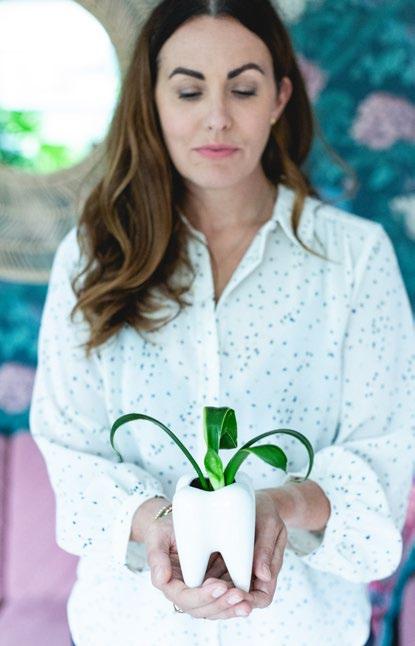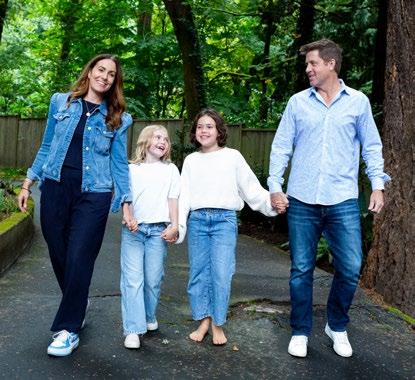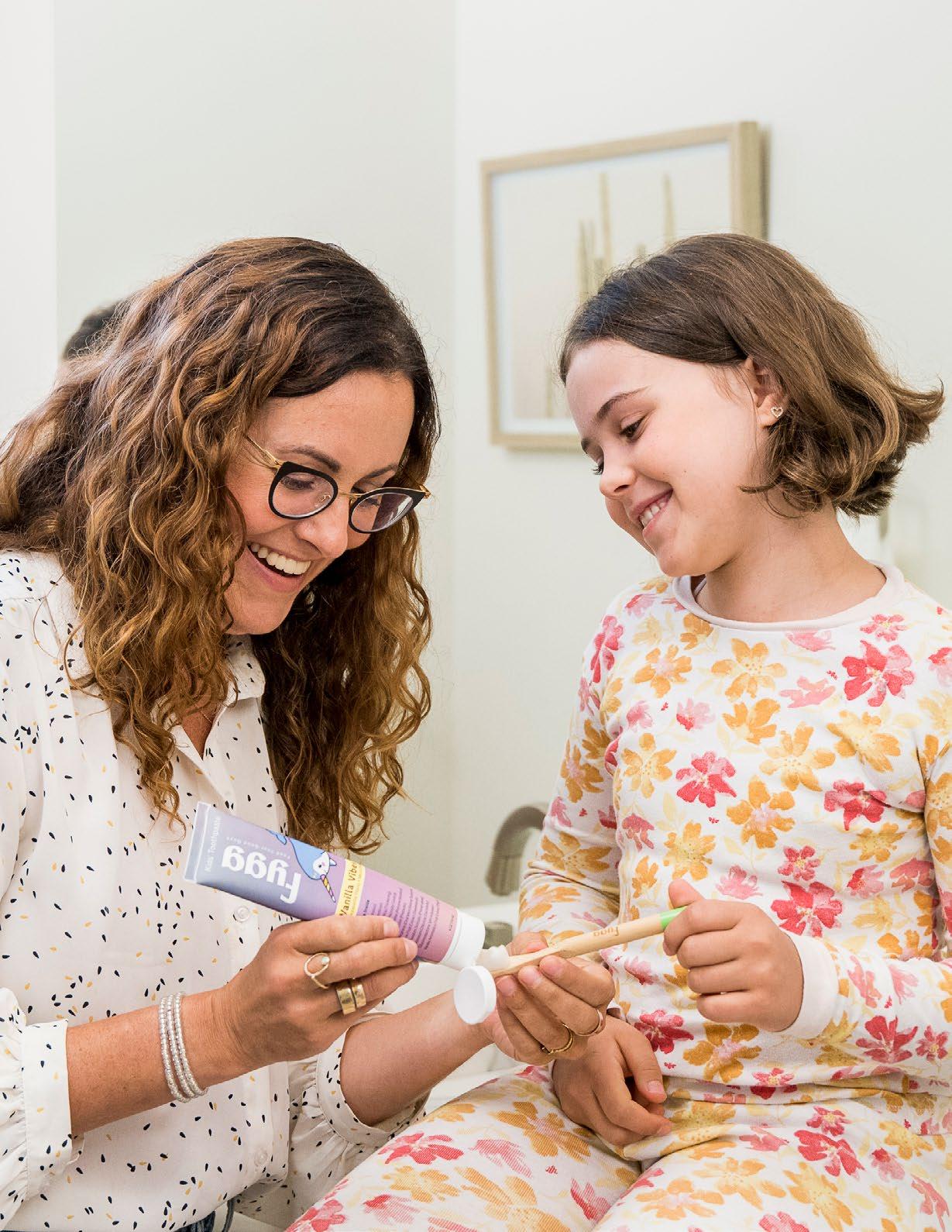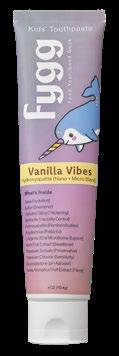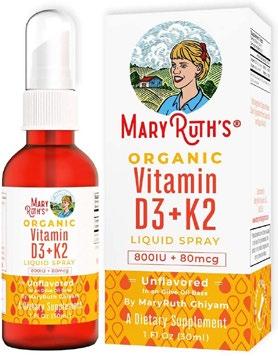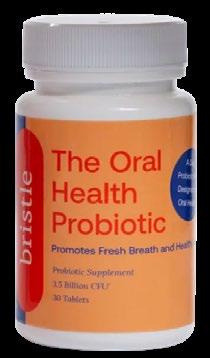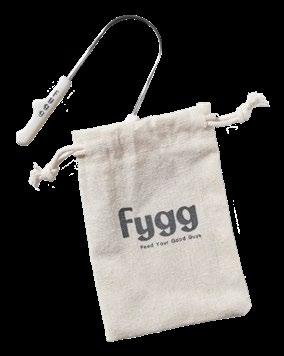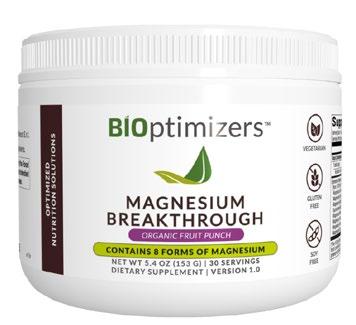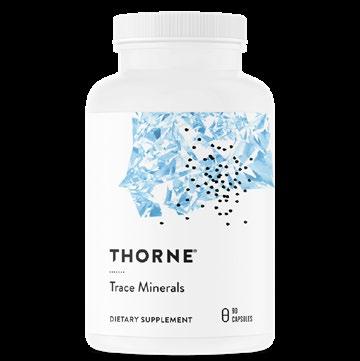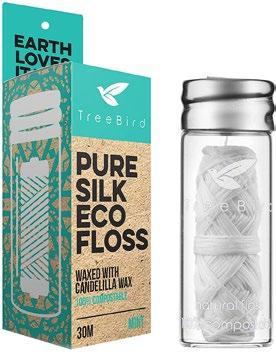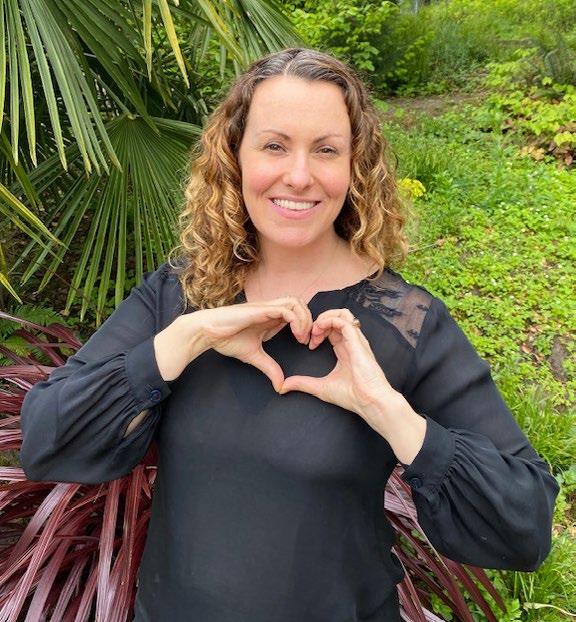What Happened to our Oral Health?

WHAT HAPPENED TO OUR ORAL HEALTH?
My research showed me that the decline of our dental health is a long story. It’s a story that starts back in our ancestral times.
In the 1930s, a dentist named Dr. Weston Price traveled worldwide, studying the dental health of our earliest ancestors. Dr. Price found that even though early humans didn’t brush, didn’t floss, and had no dental care, their teeth were straight and nearly cavity-free. Their jaws, too, were wide and well-formed. In short, their dental health was nearly ideal.
As Dr. Price traveled the globe, he also compared people in traditional cultures to those in more modern cultures. Over and over again, he found that people living lifestyles closest to those of their ancestors—that is, eating traditional diets and living traditional lifestyles—had healthy teeth, strong jaws, good airways, and almost no cavities. People living a modern lifestyle, on the other hand, had advanced dental disease, many cavities, badly formed jaws, crowded teeth, and compromised airways.

What caused our oral health to decline so dramatically over time? The first stage in this process occurred around ten thousand years ago, when hunter-gatherers first began to turn to farming. Rather than eating high-nutrient meat and fish, animal fats, and wild-growing vegetables, they started eating soft, carbohydrateloaded, nutrient-poor grains. And instead of chewing raw foods, they began subsisting largely on soft foods like breads and porridge.
As a result, they shorted themselves of the chewing and the nutrients needed for good oral health. In addition, as they loaded their diet with the kinds of carbohydrates that bad oral bugs love, cavities started to run rampant. At the same time, their jaws became undersized and their airways weakened because their oral muscles didn’t get the workout they needed.
Now, fast-forward to a few hundred years ago, when humans started milling grains using modern machinery rather than pounding or rolling them with stones. This made grains even softer and easier to chew—and the better milling technology became, the less nutritious grains became.
But the biggest challenge to our dental health arose in the 1900s, when big corporations began to take over our food production. Over the decades, these companies took more and more control over what we ate—and these days, the vast majority of food products in our stores are processed or even ultra-processed by manufacturers.
To make this food more tempting, manufacturers load it with sugar, artificial colors, artificial flavors, and other ingredients that are alien to our bodies. To make it cheaper, they fill it with junk. And because they value profits over health, they pack it with preservatives to lengthen its shelf life.
6
As a result, our bodies are sicker than ever—and that’s especially true for our mouths. These days, it’s common for me to see toddlers who already have a mouthful of cavities. Oral disease is the number-one illness for children and teens (as well as adults), and by the age of 17, 78% of children have at least one filling. Many of these children also have crooked teeth and need orthodontia, and most will need to have their wisdom teeth pulled at some point due to their too-small jaws. A startling number also have weak airways that cause them to struggle to breathe, leading to sleep apnea, learning problems, behavior problems, and even symptoms of attention-deficit/hyperactivity disorder (ADHD).
Worst of all, a diet of processed, nutrient-deficient food creates a problem called oral dysbiosis, or a dangerous disruption of the oral microbiome. (I’ll talk much more about this shortly.) Oral dysbiosis doesn’t just lead to damaged teeth and gums; it affects your child’s entire body, causing chronic, system-wide inflammation. This inflammation makes your child ill and saps their energy, making it harder to concentrate, learn, or behave. In addition, it puts your child at future risk for serious or even deadly diseases. For instance:
• People with gum disease have a two to three times greater risk of suffering a stroke or heart disease.
• Research links oral pathogens to Alzheimer’s disease and dementia.
• Periodontal disease is linked to issues with conception and fertility, as well as complications with pregnancy outcomes.
• Oral disease is associated with an increased risk for cancer.
• Periodontal disease can make it harder to breathe easily. One recent study found that “all measures of lung function deteriorated as gum disease worsened.”
In short, the changes that occurred between our earliest ancestors’ time and today are putting our kids at risk—not just for cavities and oral disease during childhood, but for chronic diseases in adulthood.
This discovery led me to my “aha” moment. Once I realized that the “progress” we’ve made over thousands of years was destroying our dental health, I knew this was the piece of the puzzle I’d been missing. I realized that simple, natural dietary and lifestyle changes could solve or even prevent dental problems. I also realized that to address these problems, I needed to get as “upstream” as possible before my patients suffered permanent damage.
That’s why I made the big decision to become a pediatric dentist. Now I work with children and their parents, teaching families how to keep their teeth cavity-free, keep their gums healthy, and keep their airways optimal. And it’s why I’ve switched from traditional dentistry—the “drill, fill, and bill” approach—to functional dentistry, which is a revolutionary approach to oral care. Here are the pillars of functional dentistry:
• Functional dentists know that to have good dental health, you need to have a healthy, natural diet and a healthy, natural lifestyle.
• Functional dentists believe in prevention. That’s because the best problem is one that doesn’t happen in the first place.
• Functional dentists believe in safe, natural solutions when treatment is necessary. For this reason, our materials are free from mercury, BPA and micro-plastics, and other toxins.
• Functional dentists believe in respecting, educating, and partnering with patients and their families—because while we see our patients a few times a year, kids and their parents are in charge of their dental health 365 days a year.
• Functional dentists believe in treating patients holistically. To a functional dentist, you’re not just a “mouth;” instead, you’re a whole person and every aspect of your health matters. We look at root causes and help guide patients to true health and future prevention.
And here’s one of the most essential principles of functional dentistry: We believe that a healthy mouth starts with a healthy oral microbiome. That’s why, in order to make sure my pediatric patients have healthy mouths for life, I teach their families how to keep their oral microbiomes healthy and balanced. In fact, that’s the most significant issue we talk about in my office. Here’s why.
7
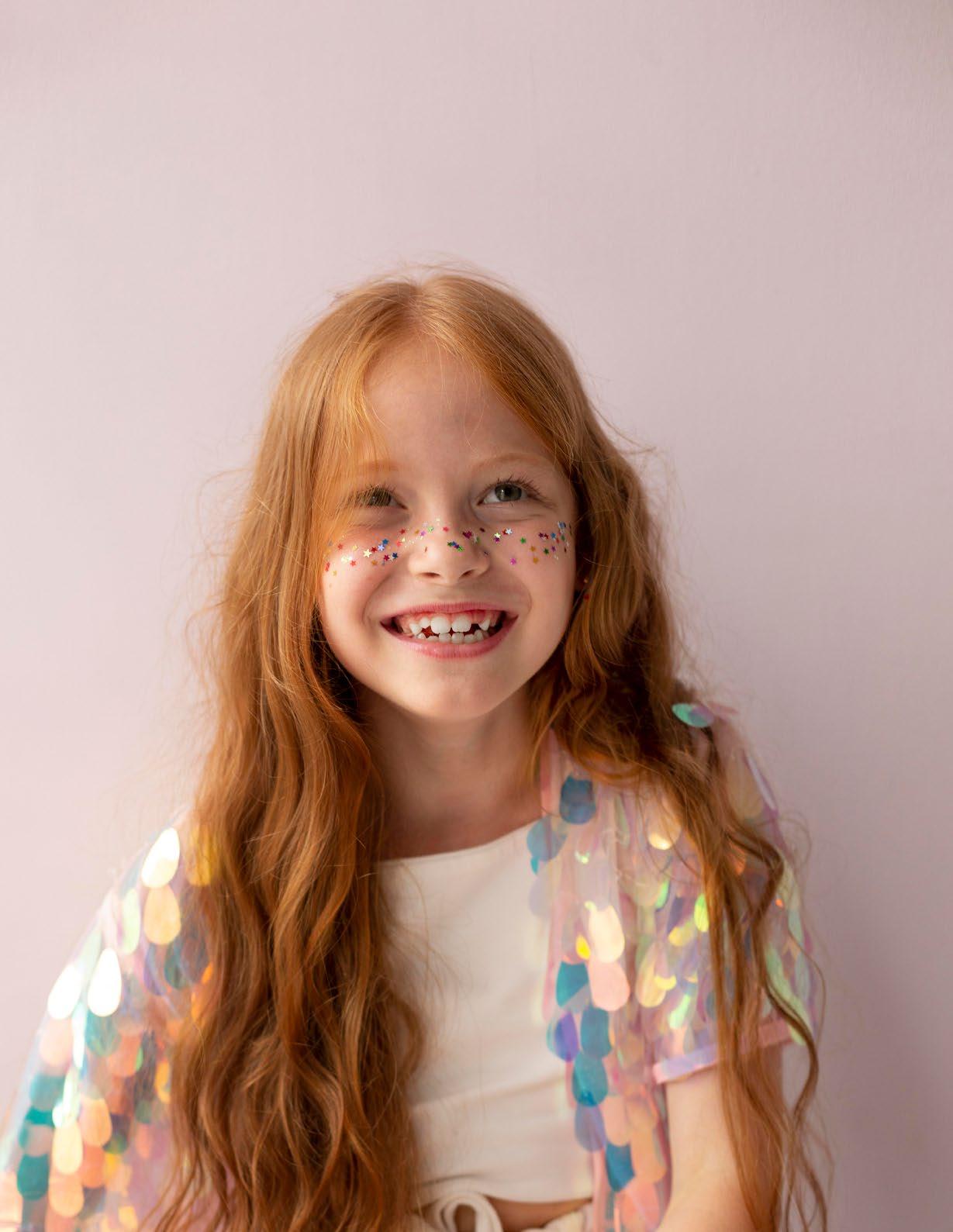
How to Rescue Your Child’s Microbiome
HOW TO RESCUE YOUR CHILD’S MICROBIOME
Luckily, functional dentists are experts at keeping the oral microbiome thriving or getting it back to good health if it’s sick. So with the help of a functional dentist, you can transform your child’s oral microbiome from unbalanced and altered to strong and healthy. In fact, you can do much of the job on your own, by taking a few simple steps. Here they are:
1: Ditch the sugar.
When our early ancestors roamed the earth, sugar was hard to find because it only came packaged in a few nutritious foods like seasonal fruits. It was a rare treat—and it was even healthy back then, because it gave our ancestors a burst of energy and brain fuel.
Today, however, sugar is everywhere. If fact, today’s kids eat more than 65 pounds of sugar each year! Walk down the center aisles of the grocery store, and you’ll see row after row of sugar-laden drinks, cookies, candies, yogurts, snack foods, and cereals. Sugar is even lurking in nonsweet foods ranging from salad dressings to spaghetti sauce.
Pathogenic bacteria love sugar, so the more sugar your child eats, the more these bugs will multiply. To stop them from getting a foothold in your child’s mouth, you need to ditch sugar-sweetened beverages, sweetened breakfast cereals, toaster pastries, waffles, cookies, cake, fruit snacks and leathers, and other sugar-loaded ultra-processed foods. Read labels and say “no” to foods containing added sugar.
TIP: For many parents, cutting back on sugary foods at breakfast is the biggest challenge. I recommend reaching for quick, easy, high-protein and nutrient dense alternatives that fit in with the morning rush, including scrambled or hard-boiled eggs, sausage or bacon, nuts and nut butters, nourishing soups, and dinner leftovers.

11
2: Cut back on processed foods (or cut them out altogether).
Today, more than half of a typical American’s diet consists not just of processed foods, but of ultra-processed foods. For teens, things are even worse: two-thirds of their diet consists of these foods.
Why are processed and ultra-processed foods so bad for us—and particularly for growing kids? Because in addition to being loaded with sugar, they’re filled with artificial colors and flavors, thickeners, and other chemicals created not by Mother Nature but by a laboratory.
These substances are completely alien to your oral microbes—like putting diesel in a car that runs on regular—so when kids eat them constantly, it causes their microbiomes to become inflamed and sick. This in turn leads to the “leaky gums” I talked about earlier, making your child’s entire body sick, stressed, and inflamed. So read labels, search for natural ingredients, and steer clear of these processed foods whenever you can.
And here’s another tip: Cut out most sports drinks and energy drinks. In addition to frequently containing large doses of caffeine and sugar that can unbalance the microbiome, most of these drinks contain citric acid to extend their shelf life—and that’s bad news for your child’s tooth enamel, because it bathes the teeth in cavity-promoting acid.
TIP: If your kids love energy drinks, there are healthy, tooth-friendly and microbiome-friendly options on the market. My favorite electrolyte powders are LMNT and Re-Lyte, which have no added sugars. See my FREE Product Guide on DoctorStaci.com for more of my faves and discounts.

12
3. Scale back the fermentable carbs.
Some carbohydrates, called fermentable carbohydrates, turn directly into sugar in your child’s mouth—and this means they’re just as bad as sugar for the oral microbiome. So lots of “healthy” foods that kids eat are actually very bad for their beneficial oral microbes.
(A quick note: I’m not talking here about fermented foods, which are a big “yes” and definitely should be part of your child’s diet. We’ll get to those later.)
Fermentable carbs include crackers, pretzels, and chips—even those made from grains we consider healthy. Believe it or not, these foods can be just as bad for your child’s teeth and microbiome as candy or cookies.
In addition to turning into sugar that feeds bad bacteria, foods high in fermentable carbs are harmful in another way: They’re “sticky.” Think about how it feels when you rub your tongue over your teeth after you eat a handful of crackers, a granola bar, or a bag of chips. Most likely, that slimy feeling makes you take a sip of water, chew a stick of gum, or reach for the floss. Kids, however, are likely to ignore the bits of food that are clinging to their teeth and feeding their bad bugs.
Now, it’s okay if kids have an occasional quick snack of fermentable carbs. However, if they’re eating crackers, pretzels, chips, and other starchy foods all day long, those starches are feeding pathogenic bugs for hours at a time.
This is why it’s smart to limit grain-based crackers, chips, granola bars, and other starchy munchies in your child’s diet. Instead, offer up snacks like these:
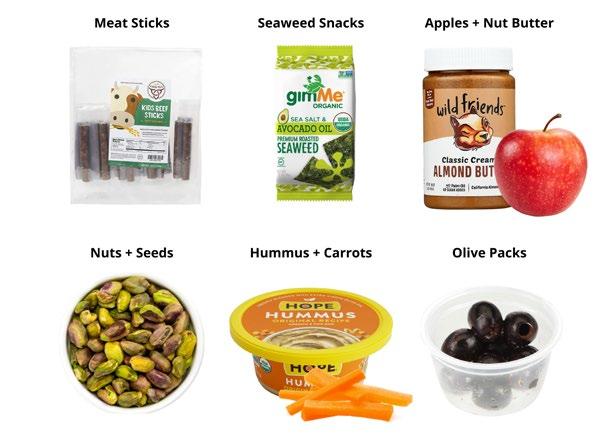
In particular, cut down on starchy snacks during the middle of the day, when your child won’t be brushing anytime soon. And follow the “one sitting” rule: Offer starchy foods in a single portion small enough for your child to eat at one time, followed by some swishes of water. PRO-TIP: offer a crunchy apple, carrot or celery after sticky snacks to dislodge food particles. Or cheese can be offered after to buffer the pH or the mouth. And please, please, please floss nightly if you are choosing to eat these foods!

13
4. Focus on natural, nutrient-dense foods.
Once you’ve cut down on sugar, processed foods, and fermentable carbs, what’s left? Plenty of beautiful, natural foods that feed your child’s microbiome the nutrients it needs to flourish.
Each day, center your child’s diet around high-quality proteins, fresh fruits and vegetables, and healthy fats. As a guideline, include at least one serving of protein, fats, and vegetables at each meal, and offer fruit at least once a day.
Here are the most nutrient-dense proteins you can feed your child. If possible, buy wild-caught fish and seafood and pastured meat and eggs.
• Fish and seafood
• Poultry
• Beef
• Lamb
• Organ meats
• Eggs
• Natto
• Whole milk and cheese (if your child isn’t intolerant to dairy)
When you choose fats, avoid highly processed seed oils such as canola and corn oil, and instead reach for natural fats like these.
• Butter
• Olive oil
• Avocados and avocado oil
• Nuts and nut butters
• Coconut and coconut oil
• Chia, hemp, and flax seeds
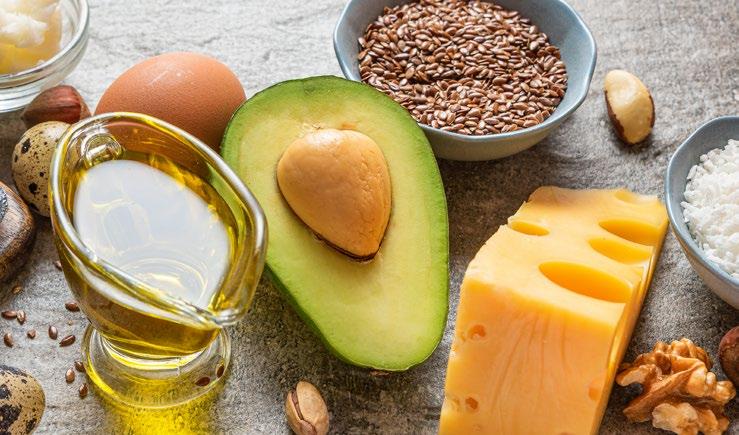

14
Most important of all, load your child up on fruits and vegetables, which are rich in the fiber and nutrients that beneficial microbes crave—and when you’re choosing fruits and vegetables, follow the classic advice to “eat the rainbow.” The colors in fruits and veggies come from phytonutrients, and different phytonutrients feed different types of good bacteria. So load your child’s meals with:
• PURPLE AND BLUE fruits and vegetables: red cabbage, purple cauliflower, blackberries, blueberries, eggplant, grapes, prunes, and plums.
• GREEN fruits and vegetables: kale, spinach, broccoli, avocados, asparagus, green bell peppers, limes, zucchini… the list goes on!
• YELLOW AND ORANGE fruits and vegetables: oranges, mangoes, grapefruit, carrots, sweet potatoes, bananas, yellow bell peppers, pears, lemons, pineapple, summer squash, and golden apples.
• RED fruits and vegetables: beets, red bell peppers, apples, cranberries, grapes, cherries, tomatoes, plums, pomegranates, raspberries, and strawberries.
In particular, be sure to serve orange and dark green foods every day. These are superfoods when it comes to the health of your child’s oral microbes. And add crunchy raw fruits and vegetables, to give your child’s jaw a strengthening workout.
In addition, add probiotic and prebiotic foods to your child’s diet. Probiotic foods contain beneficial microbes that keep the oral microbiome healthy; good choices are plain yogurts and kefirs (and adventurous kids may be willing to try “spicier” fermented foods like sauerkraut, pickles, and kimchi). Prebiotic foods, which supply the “fertilizer” for good gut bugs, include onions, garlic, jicama, asparagus, bananas, and almonds. Eat the Rainbow!
Finally, remember the most important nutrient of all: water. Kids need lots of water every day to clean and refresh their microbiomes and ensure optimal salivary flow.
Are “cheats” okay?
Ideally, our kids would steer clear of sugary or junky food completely. But nobody’s perfect, and any child is going to be tempted by pizza, birthday cake, and other goodies. So I suggest following the 80/20 role: Let your child splurge 20% of the time, in exchange for eating clean, nutritious foods the other 80% of the time.

15
5. Add supplements.
Even when kids eat right, they may be missing some crucial nutrients. That’s why I recommend supplementing with a few key vitamins, minerals, and fatty acids. Here are the ones to focus on:
Vitamins D3 and K2
Vitamin D3 is crucial for dental health, because it helps the body to absorb calcium and phosphate—two essential elements of tooth enamel—in the gut. In addition, the dentin that lies underneath the enamel in your child’s teeth needs vitamin D in order to re-mineralize. Moreover, vitamin D3 is an anti-inflammatory powerhouse. This means it helps to rein in the inflammation that damages the oral microbiome and leads to cavities and gum disease.
It’s critical to take vitamin D3 together with another nutrient, vitamin K2. That’s because these two vitamins work hand-in-hand, and if your child is deficient in vitamin K2, vitamin D3 can’t do its job.
By the way, vitamin K has a fascinating back story. Weston Price discovered its importance in dental health back in the 1920s, even though this vitamin hadn’t even been discovered back then. His research pointed to a mystery nutrient in foods like butter and cod liver oil—a nutrient he dubbed “activator X”— that helped to prevent cavities, and even helped to properly shape the facial bones of people in traditional cultures. Decades later, scientists discovered that this mystery nutrient was vitamin K2.
These two vitamins are so important—and they’re so likely to be deficient in kids—that I recommend that kids take a D3/K2 supplement. These are fat-soluble vitamins, so your child needs to take them with fat for them to be absorbed. Some brands handle this issue by suspending the vitamins in olive oil or sesame oil. A good brand for kids is Mary Ruth D3/K2, which is what I give my girls, but I have other options in my FREE Product Guide on my website DoctorStaci.com.
Vitamins E and A and omega-3 fatty acids
These nutrients help to keep your child’s oral microbiome healthy because they reduce inflammation. In addition, each one plays a role in dental health. For instance:
• Vitamin E helps the ligaments in the gums to hold your child’s teeth securely.
• Vitamin A helps to build bone and to keep the membranes of the mouth and throat moist (which in turn keeps the oral microbiome happy).
• Omega-3 fatty acids help to inhibit the growth of oral pathogens.

16
Trace Minerals
I strongly recommend supplementing with trace minerals. The most important of these is magnesium, which is crucial for vitamin D and calcium utilization. Many people around the world are deficient in magnesium, because our topsoil is depleted of this mineral—so even when we’re eating the most nutritious foods, we’re probably not getting enough magnesium in our diets.
Of course, kids also need to get plenty of calcium to build strong teeth. In addition to cheese and other dairy foods, lots of other foods have high levels of calcium. If your child eats a dairy-free diet, here are calciumrich foods you can add:


Probiotic and prebiotic supplements
I know it can be tricky to get kids to eat enough of the probiotic and prebiotic foods I mentioned earlier. Luckily, you can now find supplements that specifically target the either the microbes in the mouth or the microbes in the gut. Good brands include BioGaia, Hyperbiotic, and Superseed.
TIP: If you give your child probiotic and prebiotic supplements, timing is key. Keep oral probiotic supplements in the bathroom and have your child take them after the nightly brushing and flossing, so the microbes can safely make themselves at home while your child is sleeping. Gut probiotics, on the other hand, need to be taken with food, so offer them during the day.

17
6. Make flossing non-negotiable!
I know that kids hate flossing. (Most adults aren’t wild about it, either.) However, my rule is that flossing is so important that it needs to be nonnegotiable, like wearing a bike helmet or a seatbelt. It also needs to happen every single night, no matter how tired kids and their parents are. That’s because flossing is crucial to avoiding cavities an sleep gums healthy and pathogenic microbes under control.
I like parents to start a flossing routine as soon as any teeth touch in their child’s mouth. Most bad bacteria are anaerobic, meaning that they don’t like oxygen, so they lurk between the teeth where there’s less oxygen. In particular, they hide out in the spaces between your child’s molars.
If your child’s teeth are touching when they come in, you may need to start flossing right away. If not, start when the second “two-year-old” molars come in, between two and three years of age. These molars will touch the first molars, and that is the top spot for cavities to form.
Now, I know first-hand that flossing kids’ teeth can be a challenge. My own kids put up such a fuss that I worried about the neighbors calling CPS. LOL! But be consistent and loving, and your child will eventually learn to accept the routine, much like they learn to accept car seats, face and bum wipes, and ear checks.
I recommend buying floss picks, because they’re the easiest ones to use. Also, start early, so your little one gets used to the feeling of flossing. Let tiny tots play with floss sticks (under close supervision) on the changing table, so they’ll get familiar with them. Later, consider flossing in the bedroom. In my house, I leave a bowl of floss picks on the bedroom nightstand, so they’re easy to reach. When it’s time to floss, I lay my girls back on a beanbag or on their beds. (You can see much better if you’re looking down into the mouth, and you can be gentler and reach more areas.)
Start with the back molars, gently see-sawing the flosser down until it pops through the contact point and scraping one side of the tooth and then the other side (like a “C” and a backwards “C”). If your child really puts up a fight, at least get the back molars flossed, because that’s where trouble most often arises. Do this even before brushing…it is THAT important to get it done.
Once kids are around 10, they’re likely old enough to start flossing on their own. However, be sure to supervise your child during the first few weeks/months of independent flossing, to make sure it’s being done right and ask your dental team if they seem ready to be rolling solo at their check-ups.

18
7. Teach your child to brush right.
No matter how willing your child is to brush independently, I’ve found that kids under the age of 10 have trouble doing a good job on their own. That’s why I recommend assisting and supervising toothbrushing if you have a child under that age. You can brush your own teeth at the same time, to model how it’s done.
Here are good guidelines for brushing your child’s teeth:
• Brush in the morning and at bedtime.
• Use the right size of toothbrush, and choose a brush with soft bristles.
• Place the toothbrush at a 45-degree angle to the gums and brush in short, gentle, circular motions, making sure every surface gets brushed.
• If your child is old enough to handle a thorough brushing, set a timer for two minutes, because how long it takes to properly brush the teeth. However, don’t force the “two-minute” rule on younger kids. For them, one minute of thorough cleaning is more than enough. Singing ABC’s twice often gets it done;).
• In addition to focusing on the molars, make sure you get the outsides of the teeth by the cheeks and the insides by the tongue. After brushing the teeth, brush the top of the tongue as well.
• Add tongue scarping as soon as kids can stick their tongues out on command.
• I highly recommend to use a hydroxyapatite toothpaste, but don’t rinse because you want those good minerals to stay on the teeth and not get rinsed down the drain. Spit or swallow, but do not rinse
Once your child is ten, you can let them take charge of brushing. If you’re not sure your child’s brushing technique is good enough, have the dentist or hygienist demonstrate the correct technique. Many parents have success with apps and YouTube videos, too. (You can also get musical apps that time your child’s brushing.)
If you want to guarantee that all the nooks and crannies in your child’s mouth are getting clean, you can use disclosing tablets. These are little tabs your child chews up, swishes around, and spits out, and they stain the biofilm pink so it shows kids where their plaque is.

19
TIP: Don’t have your child brush right after eating. That’s because every time your child eats, the mouth becomes more acidic—which is a normal part of the digestive process—and this acid attack slightly weakens the tooth enamel. So wait 20 to 30 minutes after your child eats, to allow the enzymes and calcium and phosphorus in the saliva to slowly start re-mineralizing the teeth and lowering the acid level of the mouth.
And here’s one more important piece of advice: Choose the right toothpaste! The toothpastes I recommend are brands containing hydroxyapatite. This is a form of calcium apatite, also known as calcium phosphate, and it’s the same stuff that makes up most of your child’s bones and teeth. In fact, it comprises more than 90% of the foundation of tooth enamel and 60% of bones.
This means hydroxyapatite is completely natural. Better yet, it can help to strengthen and even rebuild your child’s teeth, by naturally re-mineralizing them. In fact, studies show that hydroxyapatite can out-perform fluoride when it comes to keeping teeth strong and cavity-free. Hydroxyapatite toothpaste also does all of the other jobs that other toothpastes do, without adding artificial colors, sweeteners, plasticizers, and other nasty chemicals that can disturb the microbiome.

20
8. Partner with a functional dentist.
If you want better for your child than a “drill, fill, and bill” dentist, it’s crucial to seek out a functional pediatric dentist. This dentist will explore every aspect of your child’s health, help you cultivate your child’s oral microbiome, and choose the safest, most natural, and least invasive methods for treating dental problems. In addition, a functional dentist can help you identify and address airway problems that can cause a wide range of childhood problems ranging from allergies to food intolerances and gut health issues, to poor sleep and behavioral and academic issues.
Functional dentists also partner with other professionals who can help to optimize your child’s oral and airway health. These include myofunctional therapists (who use exercises and special devices to improve children’s jaw and airway development), sleep experts, functional orthodontists, otolaryngologists (ENTs), bodywork specialists, naturopaths and functional medicine docs, and other experts in addressing childhood issues.
In addition, functional dentists have some very cool tools to make dental care safer, more effective, and even less scary. They include:
• Lasers. Dental lasers are one of the most powerful new tools in the functional dentist’s office. Often, we can use them to painlessly remove decayed areas from teeth, meaning that we can avoid the drill and th indeed for local anesthesia (“Novocain”). They’re also a biologically protective, gentle, and highly effective way to debridge and disinfect teeth, and they also make periodontal and oral surgery procedures easier, safer, more effective, and help with healing.
• Ozone therapy. Ozone (O3) is “supercharged” oxygen that has three molecules of oxygen, compared to the two molecules of oxygen we breathe. It’s a safe, natural gas that has powerful anti-bacterial, anti-viral, and anti-fungal properties. We use it to kill pathogenic microbes on children’s teeth and gums, and it can help to hardens the tooth to stop decay by supporting.
Ozone gas plays a multifaceted role in dentistry, and its effects on collagen, decay arrest, peroxide release, and immune function are some of its potential benefits, although research is still ongoing. Here’s a breakdown:
How ozone gas works:
• Disinfection: Ozone is a potent oxidant that disrupts the cell membranes of bacteria and viruses, effectively killing them. This makes it beneficial for combating various dental infections like cavities, gum disease, and root canal infections.
• Stimulation: Ozone reacts with water molecules in your mouth, generating hydrogen peroxide, which acts as a mild bleaching agent and further aids in disinfection. Additionally, it may stimulate cell growth and regeneration, supporting wound healing and reducing inflammation.

21
• Remineralization: Under controlled conditions, ozone can promote the remineralization of early-stage cavities by helping deposit minerals back into the tooth enamel.
Effects on collagen:
• Collagen is a crucial protein for maintaining healthy gums and teeth. Studies suggest that ozone might promote collagen synthesis in some cases, which could benefit wound healing and gum regeneration. However, more research is needed to fully understand its long-term effects on collagen.
Arrest of decay:
• Ozone’s ability to kill bacteria responsible for cavities makes it a potential tool for arresting early decay. However, it’s not a substitute for conventional fillings or proper oral hygiene. Some research suggests it might work best in conjunction with traditional dentistry techniques for better outcomes.
Release of peroxides and immune function boost:
• As mentioned, ozone reacts with water to generate hydrogen peroxide, which has antibacterial and wound-healing properties. This contributes to its overall effect in dentistry.
• Regarding immune function, some studies suggest ozone might stimulate specific immune cells, potentially boosting the body’s response to infections. However, these claims need further investigation and are not yet conclusively proven.
• Microbiome testing. Bad breath, cavities, gum disease, and other problems begin with an out-of-balance oral microbiome. To get to the roots of these problems, we need to know how the microbiome is out of balance—and the most accurate way to do this is with a simple, non-invasive salivary test. A functional dentist can recommend the right type of test for your child, interpret the results, and prescribe targeted interventions to transform an imbalanced microbiome into a healthy one.
**For more on how to optimize Oral Microbiomes, sign up for this Oral Microbiome Reset Course!
• Biomimetic materials. A traditional dentist may expose your child to harmful substances including mercury, BPA, and fluoride. A functional dentist, on the other hand, searches for the safest, most natural materials to use. For instance, I use mercury-free fillings, ceramic crowns, and BPA- free, ceramic-based sealants and fillings—and I say “no” to fluoride and “yes” to biomimetic hydroxyapatite, which offers the same advantages without the antimicrobial nature or systemic health risks.

22
Can functional dentists actually reverse cavities? Yes, we can!
I know it sounds amazing… but believe it or not, most of the time, we can “heal” (arrest or reverse) early cavities in pediatric patients.
Now, I need to say this up front; Getting cavities to disappear or freeze takes time and commitment. It generally only works with small or small-medium-sized cavities, and result vary depending on the root cause and the commitment of the family to make change and to implement our recommendations. However, most of the time it does work—and it’s far better for the tooth, as well as less scary than a dental procedure for your child! It also tends to create new, and healthier habits that will last a lifetime, leading to true health. So I strongly believe that a cavity reversal protocol should be a dentist’s first approach.
Here’s how my own cavity-reversing protocol works:
Step 1: We kill the bad microbes with ozone.
To do this, we use a small handpiece that focuses either ozone gas or ozone water directly on the cavity. This kills bad bacteria and hardens the tooth surface, stopping the decay process. We usually do several rounds of application, a few weeks apart. Each treatment is completely painless and lasts about 1 to 10 minutes.
After six months, we check to see how we’re doing. Frequently, the cavity has arrested or started to reverse by then!
Step 2: We establish a cavity-reversing home program.
Most cavities form between the teeth—and especially between the molars. That’s why flossing is a must for all kids all the time, but especially when we’re working to reverse a cavity.
In addition, we ask kids to brush three times every day using a hydroxyapatite toothpaste. This helps to rebuild the enamel, remove bacteria, and reduce the acidity of the mouth.
After the first ozone treatment, we send parents home with ozonated oil (we use a brand called Pur03) and ask them put a tiny bead of it on their child’s flosser. It’s less potent than the gas, but it still helps to kill bacteria.
For surface cavities, we give parents a little micro-brush to scrub the oil into the cavities. I like parents to do this every night if they can, but at least a few nights a week, until we see them at their follow-up visit.
Step 3: We double down on an anti-cavity diet.
We ask parents to eliminate/reduce ALL ultra-processed foods when we’re working on reversing cavities. We also ask them to be religious about making sure their kids get enough vitamin D, vitamin K, vitamin A, calcium, magnesium and trace minerals in diet or in supplemental form. In addition, we recommend getting enough high-quality probiotics and prebiotics to optimize kids’ oral and gut microbiomes. Finally, we often will test the child’s oral microbiome so we can target specific microbial imbalances.
Step 4. We address mouth breathing.
If a child is still mouth breathing at this point, we’ll get to the root of the problem. This may include multiple consultations with different experts, but it’s time and money well spent, because correcting this habit won’t just help us to reverse a cavity—it’ll help to protect the child’s teeth, gums, and entire oral microbiome for life.
**Want a deeper dive into having healthier kids? Check out this Cavity Free Kids course for more specifics and details on how to arrest and reverse issues in your children (and yourself)!

23
Here’s another cool thing about a pediatric functional dentist’s office: It’s totally kid-friendly, which includes supporting and nurturing emotional health and experiences. Rather than rushing nervous kids into the dental chair, functional dentists take time to get to know their patients and their parents, reassure them, answer their questions, and make them comfortable. They also spend lots of time explaining the “why’s” behind flossing, brushing, and eating dental-friendly food, because functional dentists know that informed kids make the best dental patients. Also, if kids have sensory issues or dental anxiety, functional dentists take extra steps to make their time in the dental chair easy and non-traumatic. We believe in choosing emotional health and positive experiences over teeth. All of this adds up to happy patients, and I’m proud to say that most of my pediatric patients like my office so much that they look forward to visiting it!

24




